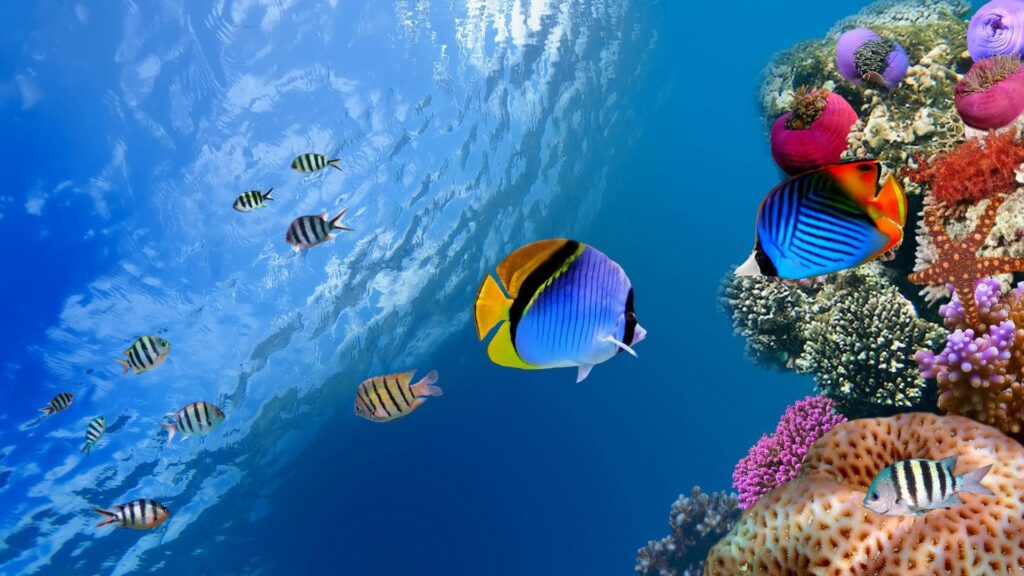Reduce Noise To Safeguard Marine Species: UN Report
Jun 11, 2023 | Pratirodh Bureau
According to the report, animals exposed to elevated or prolonged anthropogenic noise can suffer direct injury and temporary or permanent auditory threshold shifts, compromising their communication and ability to detect threats and find food, sometimes leading to death
Noise pollution is known to cause significant disturbance to marine wildlife, including migratory species protected under the Convention on the Conservation of Migratory Species of Wild Animals (CMS) such as whales and dolphins and their prey, says a report.
Such impacts can result in adverse changes to entire marine ecosystems.
The CMS has released a “landmark report” aimed at addressing a major threat to marine species – noise pollution.
According to the report, animals exposed to elevated or prolonged anthropogenic noise can suffer direct injury and temporary or permanent auditory threshold shifts, compromising their communication and ability to detect threats and find food, sometimes leading to death.
Anthropogenic noise can displace wild animals from critical habitats, including from their migration routes, and mask important natural sounds, such as the call of a mate.
The report focuses on three major sources of noise pollution – shipping, seismic airgun surveys (used in oil and gas exploration) and pile driving (used for offshore wind farms and other marine infrastructure).
It provides, for the first time, practical guidance on the Best Available Technology (BAT) and Best Environmental Practice (BEP) to reduce noise from these activities.
“Marine wildlife, including both migratory species and their prey, rely on sound for vital life functions, including communication, prey and predator detection, and orientation. But our oceans have become increasingly noisy, resulting in significant harm to marine species. This new report provides essential guidance on how to reduce noise to safeguard our marine species,” says Amy Fraenkel, Executive Secretary of CMS.
The report, released on June 8 to mark World Oceans Day, highlights the application of quieting technologies that reduce sound at the source as the most effective way to reduce the negative impacts of underwater noise on marine wildlife.
These quieting methods and practices may also have additional benefits, such as reducing greenhouse gas emissions and contributing to the mitigation of climate change — another major threat to marine wildlife.
For the shipping industry, the application of BAT and BEP includes alterations in ship design and propeller technology, and improving operating conditions. Reducing the speed of container and cargo ships, known as slow steaming, not only lowers the acoustic footprint but also reduces fuel consumption and CO2 emissions.
Ships typically burn less fuel at lower speeds, which also helps to reduce costs for ship operators. Quieting the noisiest 10-15 per cent of ships would be particularly effective as they contribute disproportionately to overall shipping noise.
As an alternative to Seismic airgun surveys, which pose significant threats to marine life (primarily due to the loud, intense noises produced by airguns), the report highlights the need for quieter alternatives like Marine Vibroseis, a technology designed to produce controlled, lower-frequency seismic signals.
This could be much more effective as well as environmentally friendly. It also outlines rigorous mitigation measures that should be adopted if these alternatives cannot be employed.
As for pile driving, numerous quieting technologies and noise abatement systems are now available, many of which have been developed in recent years due to action-forcing standards and noise limits set by regulators such as the German government.
“There is an abundance of evidence that underwater noise pollution is a problem for many marine species, there have been documented impacts on at least 150 species to date. Quieting technologies that reduce the noise at the source will go the furthest in reducing these impacts. Governments, such as Germany, that have set noise limits have spurred technological innovations for quieter alternatives,” says Lindy Weilgart, author of the report and ocean noise expert at OceanCare and Dalhousie University.
Despite the application of the best available quieting technologies, certain activities may still have an impact on marine life, and therefore further mitigation measures are often necessary.
These could include avoiding important areas or particular times of the year that are critical for wildlife, performing detailed environmental assessments before conducting surveys, effective regulation, strong enforcement, robust monitoring and research to improve our understanding of the impacts of underwater noise.
(Source: IANS)
